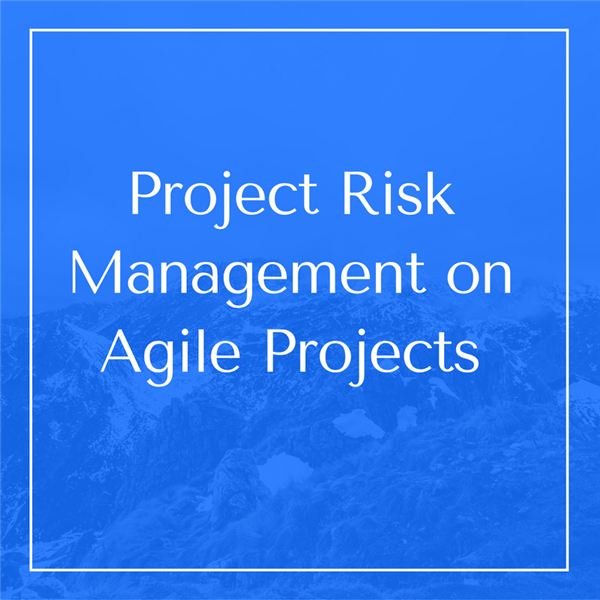Steps to Manage Risks on Agile Projects
Not Rolling Wave Risk Management
Agile projects do not magically manage risks for us! Agile’s short cycles and regular feedback might seem to have a risk management approach naturally built into the process. After all, the building blocks and attachment points for plugging in an effective risk management process are present. However, building software incrementally does not ensure risks are identified and managed. In short, agile is not about risk management, at least not in the broadest sense.
We need to exert some effort – but the agile process does help provide some good spaces where we can inject risk management activity, and outlines a couple of practical tools that can be used to start improving risk management approaches.
Inserting Risk Management into Agile Projects
Agile provides processes and mechanisms that we can leverage for effective project risk management. For example, the frequent change requests and reprioritization of the backlog provides an opportunity to insert risk avoidance or risk mitigation actions. Another example is the use of regular retrospectives that review progress and process as an opportunity to examine the effectiveness of risk management strategies and take corrective actions. Finally, daily standup meetings can also be used to identify as early warnings for potential new risks, or identifying if a risk has been triggered.
Project risk management has some parallels to the formal requirements process. Like the development of detailed requirements documentation, project risk management may seem out of step with the paradigm of agile projects. However, just as requirements are necessary, risk management is also necessary. This is one of the reasons why so many projects use a sort of ‘hybrid’ approach, combining the appropriate amounts of agile and waterfall to get the project done right. This gives a lot of credence to the idea that risk management is needed on agile projects.
The key is to get the whole team to take a risk-based view of project work in addition to a production-based view. Each agile ceremony, checkpoint or meeting, as they happen according to the prescribed cadence of the project, needs to include serious attention to examining risks as well as to-do’s. This may involve some retraining to orient everyone to this vital function.
Inject Risk Management into Agile Projects
Risk management is critical for every project, including agile projects. However, it does take some effort. With a little training to raise awareness, risk management on agile projects can become part of the process and can be an effective team effort. Using techniques like a risk-adjusted backlog, risk retrospectives and discussions of risks in daily standup meetings, you and your team can effectively manage risk on agile projects.
This post is part of the series: Project Risk Management
This series looks at the basic Risk Register; the “scope” of project risk management, laying out the various areas where project risks live; agile risk management, or special considerations for managing risks on agile projects; why all risks are not created equal, and the biggest risk of all!
